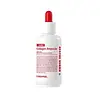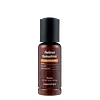What's inside
What's inside
 Key Ingredients
Key Ingredients

 Benefits
Benefits

 Concerns
Concerns

 Ingredients Side-by-side
Ingredients Side-by-side

Water
Skin ConditioningGlycerin
HumectantDiglycerin
HumectantButylene Glycol
HumectantCyclohexasiloxane
EmollientIsopropyl Palmitate
Emollient1,2-Hexanediol
Skin ConditioningNiacinamide
SmoothingLactobacillus Ferment
Skin ConditioningPolyquaternium-51
Skin ConditioningPolyglyceryl-10 Laurate
Skin ConditioningArginine
MaskingAcrylates/C10-30 Alkyl Acrylate Crosspolymer
Emulsion StabilisingCarbomer
Emulsion StabilisingBifida Ferment Filtrate
Skin ConditioningLactococcus Ferment
Skin ConditioningPrunus Amygdalus Dulcis Oil
Skin ConditioningHydrolyzed Collagen
EmollientDiospyros Kaki Leaf Extract
Skin ProtectingVitis Vinifera Fruit Extract
Skin ConditioningCoffea Arabica Seed Extract
MaskingCarthamus Tinctorius Flower Extract
Skin ConditioningPolygonum Cuspidatum Root Extract
AntioxidantAdenosine
Skin ConditioningCamellia Sinensis Leaf Extract
AntimicrobialCastanea Crenata Shell Extract
Skin ConditioningZanthoxylum Piperitum Fruit Extract
Skin ConditioningMentha Arvensis Leaf Oil
MaskingDisodium EDTA
Barosma Betulina Leaf Extract
PerfumingSodium Hyaluronate
HumectantRosa Damascena Flower Water
MaskingPueraria Lobata Root Extract
HumectantUlmus Davidiana Root Extract
Skin ConditioningPinus Palustris Leaf Extract
TonicOenothera Biennis Flower Extract
AstringentEthylhexylglycerin
Skin ConditioningGlycine
BufferingSerine
MaskingGlutamic Acid
HumectantAspartic Acid
MaskingLeucine
Skin ConditioningHydrolyzed Hyaluronic Acid
HumectantAlanine
MaskingLysine
Skin ConditioningTyrosine
MaskingPhenylalanine
MaskingThreonine
Valine
MaskingProline
Skin ConditioningIsoleucine
Skin ConditioningDipeptide Diaminobutyroyl Benzylamide Diacetate
Skin ConditioningHistidine
HumectantMethionine
Skin ConditioningCysteine
AntioxidantPalmitoyl Tripeptide-5
Skin ConditioningSodium Acetylated Hyaluronate
HumectantWater, Glycerin, Diglycerin, Butylene Glycol, Cyclohexasiloxane, Isopropyl Palmitate, 1,2-Hexanediol, Niacinamide, Lactobacillus Ferment, Polyquaternium-51, Polyglyceryl-10 Laurate, Arginine, Acrylates/C10-30 Alkyl Acrylate Crosspolymer, Carbomer, Bifida Ferment Filtrate, Lactococcus Ferment, Prunus Amygdalus Dulcis Oil, Hydrolyzed Collagen, Diospyros Kaki Leaf Extract, Vitis Vinifera Fruit Extract, Coffea Arabica Seed Extract, Carthamus Tinctorius Flower Extract, Polygonum Cuspidatum Root Extract, Adenosine, Camellia Sinensis Leaf Extract, Castanea Crenata Shell Extract, Zanthoxylum Piperitum Fruit Extract, Mentha Arvensis Leaf Oil, Disodium EDTA, Barosma Betulina Leaf Extract, Sodium Hyaluronate, Rosa Damascena Flower Water, Pueraria Lobata Root Extract, Ulmus Davidiana Root Extract, Pinus Palustris Leaf Extract, Oenothera Biennis Flower Extract, Ethylhexylglycerin, Glycine, Serine, Glutamic Acid, Aspartic Acid, Leucine, Hydrolyzed Hyaluronic Acid, Alanine, Lysine, Tyrosine, Phenylalanine, Threonine, Valine, Proline, Isoleucine, Dipeptide Diaminobutyroyl Benzylamide Diacetate, Histidine, Methionine, Cysteine, Palmitoyl Tripeptide-5, Sodium Acetylated Hyaluronate
Water
Skin ConditioningButylene Glycol
HumectantGlycerin
Humectant1,2-Hexanediol
Skin ConditioningAluminum Starch Octenylsuccinate
AbsorbentBakuchiol
AntimicrobialHydrolyzed Sodium Hyaluronate
Skin ConditioningSodium Hyaluronate
HumectantHyaluronic Acid
HumectantSodium Hyaluronate Crosspolymer
HumectantPotassium Hyaluronate
Skin ConditioningHydroxypropyltrimonium Hyaluronate
Hydrolyzed Hyaluronic Acid
HumectantSodium Acetylated Hyaluronate
HumectantRosa Damascena Flower Water
MaskingXanthan Gum
EmulsifyingTromethamine
BufferingCaprylic/Capric Triglyceride
MaskingCarbomer
Emulsion StabilisingAcrylates/C10-30 Alkyl Acrylate Crosspolymer
Emulsion StabilisingAdenosine
Skin ConditioningGlyceryl Acrylate/Acrylic Acid Copolymer
HumectantHydrogenated Lecithin
EmulsifyingDisodium EDTA
Methyl Methacrylate Crosspolymer
Retinol
Skin ConditioningInulin Lauryl Carbamate
Emulsion StabilisingHydroxydecyl Ubiquinone
AntioxidantCholesterol
EmollientTocopheryl Acetate
AntioxidantBHT
AntioxidantVigna Radiata Seed Extract
Skin ConditioningAvena Sativa Kernel Extract
AbrasiveWater, Butylene Glycol, Glycerin, 1,2-Hexanediol, Aluminum Starch Octenylsuccinate, Bakuchiol, Hydrolyzed Sodium Hyaluronate, Sodium Hyaluronate, Hyaluronic Acid, Sodium Hyaluronate Crosspolymer, Potassium Hyaluronate, Hydroxypropyltrimonium Hyaluronate, Hydrolyzed Hyaluronic Acid, Sodium Acetylated Hyaluronate, Rosa Damascena Flower Water, Xanthan Gum, Tromethamine, Caprylic/Capric Triglyceride, Carbomer, Acrylates/C10-30 Alkyl Acrylate Crosspolymer, Adenosine, Glyceryl Acrylate/Acrylic Acid Copolymer, Hydrogenated Lecithin, Disodium EDTA, Methyl Methacrylate Crosspolymer, Retinol, Inulin Lauryl Carbamate, Hydroxydecyl Ubiquinone, Cholesterol, Tocopheryl Acetate, BHT, Vigna Radiata Seed Extract, Avena Sativa Kernel Extract
 Reviews
Reviews

Ingredients Explained
These ingredients are found in both products.
Ingredients higher up in an ingredient list are typically present in a larger amount.
1,2-Hexanediol is a synthetic liquid and another multi-functional powerhouse.
It is a:
- Humectant, drawing moisture into the skin
- Emollient, helping to soften skin
- Solvent, dispersing and stabilizing formulas
- Preservative booster, enhancing the antimicrobial activity of other preservatives
Acrylates/C10-30 Alkyl Acrylate Crosspolymer is a synthetic polymer. It is used to thicken and improve the texture of products. Due to its properties, it can prevent water and oil ingredients from separating.
Adenosine is in every living organism. It is one of four components in nucleic acids that helps store our DNA.
Adenosine has many benefits when used. These benefits include hydrating the skin, smoothing skin, and reducing wrinkles. Once applied, adenosine increases collagen production. It also helps with improving firmness and tissue repair.
Studies have found adenosine may also help with wound healing.
In skincare products, Adenosine is usually derived from yeast.
Learn more about AdenosineButylene Glycol (or BG) is used within cosmetic products for a few different reasons:
Overall, Butylene Glycol is a safe and well-rounded ingredient that works well with other ingredients.
Though this ingredient works well with most skin types, some people with sensitive skin may experience a reaction such as allergic rashes, closed comedones, or itchiness.
Learn more about Butylene GlycolCarbomer is a polymer of acrylic acid. Its main role is to create a gel consistency.
A high amount of carbomer can cause pilling or balling up of products. Don't worry, most products contain 1% or less of carbomer.
Disodium EDTA plays a role in making products more stable by aiding other preservatives.
It is a chelating agent, meaning it neutralizes metal ions that may be found in a product.
Disodium EDTA is a salt of edetic acid and is found to be safe in cosmetic ingredients.
Learn more about Disodium EDTAGlycerin is already naturally found in your skin. It helps moisturize and protect your skin.
A study from 2016 found glycerin to be more effective as a humectant than AHAs and hyaluronic acid.
As a humectant, it helps the skin stay hydrated by pulling moisture to your skin. The low molecular weight of glycerin allows it to pull moisture into the deeper layers of your skin.
Hydrated skin improves your skin barrier; Your skin barrier helps protect against irritants and bacteria.
Glycerin has also been found to have antimicrobial and antiviral properties. Due to these properties, glycerin is often used in wound and burn treatments.
In cosmetics, glycerin is usually derived from plants such as soybean or palm. However, it can also be sourced from animals, such as tallow or animal fat.
This ingredient is organic, colorless, odorless, and non-toxic.
Glycerin is the name for this ingredient in American English. British English uses Glycerol/Glycerine.
Learn more about GlycerinHydrolyzed Hyaluronic Acid is a form of hyaluronic acid. It is created by the hydrolysis of hyaluronic acid with a high molecular weight. Once created, Hydrolyzed Hyaluronic Acid has a low molecular weight.
Low molecular weight HA has been shown to hydrate and increase elasticity of the skin. Increasing elasticity is also associated with reduction of wrinkle depth.
One study found topical low molecular weight hyaluronic acid may be considered for the treatment of rosacea in the adult population. However, we always recommend speaking with a professional about your skin concerns.
Hyaluronic acids are a humectant. This means they draw moisture from the air. Hyaluronic acids help moisturize, soothe, and protect the skin.
Read more about other common forms of hyaluronic acid:
Learn more about Hydrolyzed Hyaluronic AcidRosa Damascena Flower Water comes from the Damask rose. It is a dilluted version of the Rose Essential oil.
The Damask Roses' petals have antioxidant, antimicrobial, and fragrance compounds. Though antioxidants are great for soothing skin, the fragrance compounds can irritate it.
Sodium Acetylated Hyaluronate is a type of Hyaluronic Acid.
Hyaluronic Acids help moisturize, soothe, and protect the skin.
Read about common types of Hyaluronic Acid here:
Sodium Hyaluronate
Hydrolyzed Hyaluronic Acid
Hyaluronic Acid
Sodium Hyaluronate is hyaluronic acid's salt form. It is commonly derived from the sodium salt of hyaluronic acid.
Like hyaluronic acid, it is great at holding water and acts as a humectant. This makes it a great skin hydrating ingredient.
Sodium Hyaluronate is naturally occurring in our bodies and is mostly found in eye fluid and joints.
These are some other common types of Hyaluronic Acid:
Learn more about Sodium HyaluronateWater. It's the most common cosmetic ingredient of all. You'll usually see it at the top of ingredient lists, meaning that it makes up the largest part of the product.
So why is it so popular? Water most often acts as a solvent - this means that it helps dissolve other ingredients into the formulation.
You'll also recognize water as that liquid we all need to stay alive. If you see this, drink a glass of water. Stay hydrated!
Learn more about Water